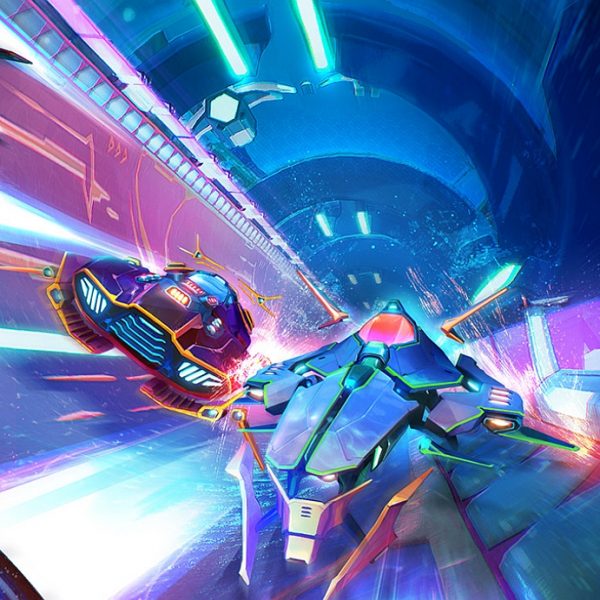It's fair to say we were absolutely spoiled with racing games in 2017, in what was a landmark year for the genre. In the space of just one month, we witnessed three contenders from major franchises jostle for position in a spectacular race to the finish line. After a long four year wait, Gran Turismo made its belated debut on PS4 with the release of the online eSports-focused Gran Turismo Sport, but it faced stiff competition from its Xbox rival franchise. Forza Motorsport 7 boasted the most comprehensive car selection of any racing game released this generation, as well as crisp 4K graphics and a new, more engrossing career mode.
Taking on these two racing game goliaths was Slightly Mad Studios’ racing simulation Project CARS 2. As the least established IP, Project CARS 2 was the ambitious underdog with huge potential, promising to be most authentic racing simulation ever made with a diverse variety of racing disciplines, an innovative dynamic weather system, and an unrivalled track selection. Annual licensed games such as MXGP 3, MotoGP 17, WRC 7, and F1 2017 also all saw significant improvements that elevated them above typical incremental updates, while futuristic racing fans were treated to the long-awaited comeback of the WipEout series with the release of WipEout: Omega Collection.
You can view the full list of nominations for the Team VVV Racing Game of the Year Awards 2018 here.
Best Bike Game
It wasn’t long ago that bike racing games were rarely released since publishers deemed them as specialist titles that were less likely to generate sales than traditional car racing games. 2017 saw Milestone revolutionise the annual MotoGP and MXGP series with new modes, improved handling and graphical updates, cementing the company as the leading developer of bike games.

Honourable Mentions
Urban Trial Freestyle 2
Nintendo fans have been deprived of the Trials series. There is, however, an alternative. A sequel to the PS3 and PC original, Urban Trials Freestyle 2 was released exclusively for 3DS. The objective is simple: successfully navigate your bike to the end of the level while avoiding obstacles and pulling off stunts. Yes, it’s very obviously inspired by Trials, but the addictive physics-based gameplay and side-scrolling perspective applies well to a handheld. While the hardware limitations of the 3DS affect the graphics, Urban Trial Freestyle 2 makes up for it with its challenging level designs and an extensive track editor.
MotoGP 17
Tight deadlines mean it’s rare to see innovation in annually licensed games, but MotoGP 17 was an exception to that rule. For Milestone’s fifth MotoGP game, the developer focused on improving the fundamentals. Unlike MXGP 3, MotoGP 17 didn’t benefit from Unreal Engine 4’s visual upgrades but the frame rate was increased to a super-smooth 60fps consoles, heightening the sense of speed and improving controller response.
Traditionally, Milestone games have been underwhelming in the sound department, but the designers applied distortion effects that made the bikes sound much more authentic compared to the artificial-sounding engines in previous games. In real life, the engines are ear-piercingly loud to the point they sound distorted, and MotoGP 17 captured this perfectly – you really feel like you’re riding an immensely powerful machine.
MotoGP 17 also introduced a new Managerial Career mode allowing you to manage your own team, which is rare to see outside of dedicated motorsport management games. The handling was also further refined. As a result, the bikes were less prone to understeering, which has been one of our chief complaints about the series. MotoGP 17 moved the series forward, but the best is yet to come as this year’s game will likely shift to Unreal Engine 4, which could potentially revolutionise the series.
Winner: MXGP 3

Considering it represented the series’ debut on current-generation consoles, MXGP 2 was a disappointing sequel. The track deformation was downgraded, the over-sensitive auto rest was infuriating, and scrubs weren’t satisfying to pull off due to canned animations. With MXGP 3, however, Milestone has finally started to reach its potential.
MXGP 3 was the first Milestone game to ditch the developer’s in-house engine in favour of Unreal Engine 4, and it totally transformed the experience. The graphics look far grittier, dense crowds brought the environments to life, and the lighting is on another level. Just about every criticism aimed at MXGP 2 has been addressed, from the less intrusive auto reset to manually-controlled scrubs that are extremely satisfying to pull off, complementing the responsive handling.
The most significant addition, however, is the advanced terrain deformation. Tyres dig into the surface in real time leaving ruts and grooves, which affected the physics and added an additional layer of challenge. Every bump is felt as you fight against the ruts in the dirt, which changes how you approach the racing line in search of optimum grip. Weather effects were also introduced to the series, with rainstorms forming puddles that affect your bike's traction. MXGP 3 is a massive step forward for the series and one of the best video game representations of motocross in a long time.
Do you agree with our winner? Let us know in the comments below. Check back soon for more Team VVV Awards 2018 coverage on the website and YouTube channel throughout March.




























